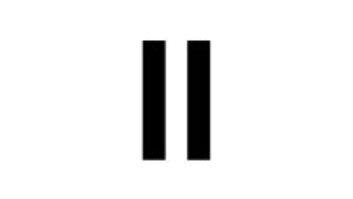(click thumbnail)Despite the abundance of more expensive (and flashier) CompactFlash-based stereo recorders, and a few lower-cost ones as well, the M-Audio Micro Track is suitable for recordists, musicians and journalists.
The MicroTrack II sports features and upgrades that address most of the negatives of the original, while coming in at the same $399 list price.
Features
The MicroTrack II comes in black plastic, which houses the familiar pin-sized recorder. The new model sports most of the same features, including recording to CompactFlash, up to 24 bit/96 kHz WAV or MP3 encoding, a T-electret stereo microphone, internal battery power, TRS 1/4 inch input for mic or line, and a handy S/PDIF digital input for use with other converters.
Menu functions are accessed via a left-side button, the right-side Enable button and front-panel buttons for channel gain, line/headphone output gain, record and track delete. The tiny GUI blue screen shows the various input/output options, as well as track time, bit/word length, gain meters and battery strength. Toggling through the menu items reveals various settings and system modes.
The new features that will interest most professional recordists include a revised input gain structure that does not overload as easily as the original, faster USB 2.0 file transfer to the editing computer, longer recording capability (more than 2 GB), 48 V phantom power for larger condenser mics, location markers for Broadcast WAV files, and an analog limiter with bypass.
Other new features are customizable file folders, CF memory test, adjustable backlight and the ability to monitor the S/PDIF input while recording.
Those familiar with the original will notice there is no longer a right-side sensitivity switch for line in or microphone inputs — just the phantom power switch, hold switch, screen brightness and menu switches.
The MicroTrack II package includes the T-mic, earbuds, a small carrying case, adapter, USB cable and manual, and can be found on the street for close to $300.
In use
The original MicroTrack took some getting used to — with its various button pushes to get it to record, play and stop — and the new one’s basic operation is the same.
What I really liked about the MicroTrack II was its ability to take higher-level inputs through its line input; the original could not record a fixed output of a CD player without clipping, requiring external attenuation.
Also appreciated were the speedy USB 2.0 file transfer, the brighter screen and the ability to mark files, which can then be renamed on the computer. Another change I liked was the unit’s automatic pause mode when recording was engaged; the original one required a separate push of the engage button after the record button was pushed.
Product CapsuleM-Audio MicroTrack II Mobile Digital Recorder
Thumbs Up

- User-friendly
- 2 GB recording capability
- Overall sound is revealing, with pleasant, welcomed warmth
- Various settings, system modes and I/O options
- ‘Defeatable’ analog limiter
- Fast USB 2.0 file transfer
Thumbs Down
- Not the sturdiest recording device
- M-Audio should change the power system to user-replaceable
Price
$399
Contact
M-Audio | (626) 633-9050 | visit www.m-audio.com.From our bench tests of the original MicroTrack, it was apparent that its high-resolution capability was very good. To test the MicroTrack II, I sampled the output of high-end universal players (SACD or DVD-A), recording several 24 bit/96 kHz acoustic guitar stereo recordings on the new one. They sounded pretty darn good via the internal DAC and headphone amp, as well as line out via its RCA unbalanced output.
Many pros may use the A/D to record, then transferring the tracks to a computer for editing/conversion to an external player format feeding a separate DAC. This is where the MicroTrack II really shined.
Despite its low cost, nd its streamlined “plastic” feel, this device recorded quality high-resolution audio. The 24 bit/96 kHz files played back via computer with the Lavry DA10 or the Benchmark DAC1 revealed nicely separated, smooth transients that were close to more expensive separate A/D recordings of the same music.
Custom Martin guitar recordings, using the included T-mic, were amazingly good, with detailed stereo image, rich mids and adequate bass. From the recording, you wouldn’t know it’s courtesy of a plug-in mini-mic set.
Our bench tests of the original MicroTrack showed dynamic range and signal-to-noise measurements well above 90 dB, plus good low-level converter linearity down to –100 dB; it wasn’t true 24 bit, but in the real world those are good numbers for a $300 recorder. According to the manufacturer, the MicroTrack II posts even better specs. And this can certainly be heard, as the overall sound through headphones is quite revealing, with pleasant, welcomed warmth.
Other functions I like on the MicroTrack II included the defeatable analog limiter that works pretty well for those who need a safety for eliminating any harsh digital clipping. And USB 2.0 now eliminates the need for an external card reader for speedy transfers to computer.
The MicroTrack II still maintained an internal rechargeable battery-powering scheme, which runs down in about 45 minutes in the 96 kHz recording mode. But the MicroTrack II now allows recording and charging simultaneously, and allows USB power at any time.
I would like to see M-Audio change the power system to user-replaceable, like the Sony D50 or the Zoom H4. For about $50, however, you can connect the MicroTrack II to those external USB battery packs and more than triple recording time.
Summary
Despite stiff competition among CompactFlash-based recorders on the market, I still have to recommend the MicroTrack II for those who don’t want to spend more than $350 for a handheld recorder.
It’s not the sturdiest feeling recording device, but its converters sound good and it is easy to learn how to use. The TRS-balanced input capability is a better way to bring outside analog in, and the T-mic is quite good for recording those rehearsals or even a real gig.
PAR’s original MicroTrack, despite some loss of battery resiliency and the paint peeling off from repeated removal from its case, still works fine, and the MicroTrack II should show equal hardiness.











